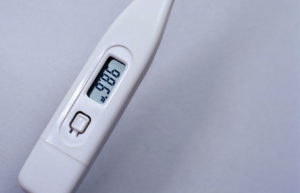
Crying is how your baby communicates with you. Your baby may cry if they are:
- Thirsty or hungry
- Have a wet diaper
- Too hot/too cold
- Uncomfortable
- Bored
- Afraid
- Hurt
- Tired or too excited
What can I do?
- Respond quickly to your baby. A quick response helps your baby calm down faster
- Thirsty/hungry – watch if your baby is sucking on their lips, fingers, or fist.(This is a sign that they are hungry). Feed your baby before they get too upset.
- Wet diaper – change a wet or dirty diaper as soon as possible.
- Too hot/too cold – take off or put on clothes or blanket to keep baby comfortable
- Uncomfortable – try changing their position in their bed or carrier. They could be in an odd position, such as laying on their arm.
- Bored/need attention – Hold, rock, or play with your baby. Try playing music, sing, talk, or read to them.
- Too excited/afraid – Hold, rock, and talk softly to calm your baby. Try to make your surroundings quieter. Try skin to skin contact with your baby or swaddling them in a blanket.
- Hurt – check for red marks or scratches. Make sure that diapers and clothes fit comfortably.
- Tired – Try placing your baby on their back and see if they settle down.

If nothing seems to help: Your baby might be sick.
See a doctor if your baby:
- Has a temperature above 99 degrees F
- Has watery stools
- Vomiting
- Less than 6-8 wet diapers a day
- A skin rash
- Crying that will not stop
For more help, contact:
- A doctor
- A friend
- Shaken Baby Alliance: 1-877-636-3727 (1-800-6-END-SBS)
- ChildHelp USA: 1-800-422-4453 (1-800-4-A-CHILD)
- Visit Mayo Clinic: www.mayoclinic.com/health/healthybaby/PR00037
- Search for “crying baby” on Medline Plus: www.nlm.nih.gov/medlineplus




